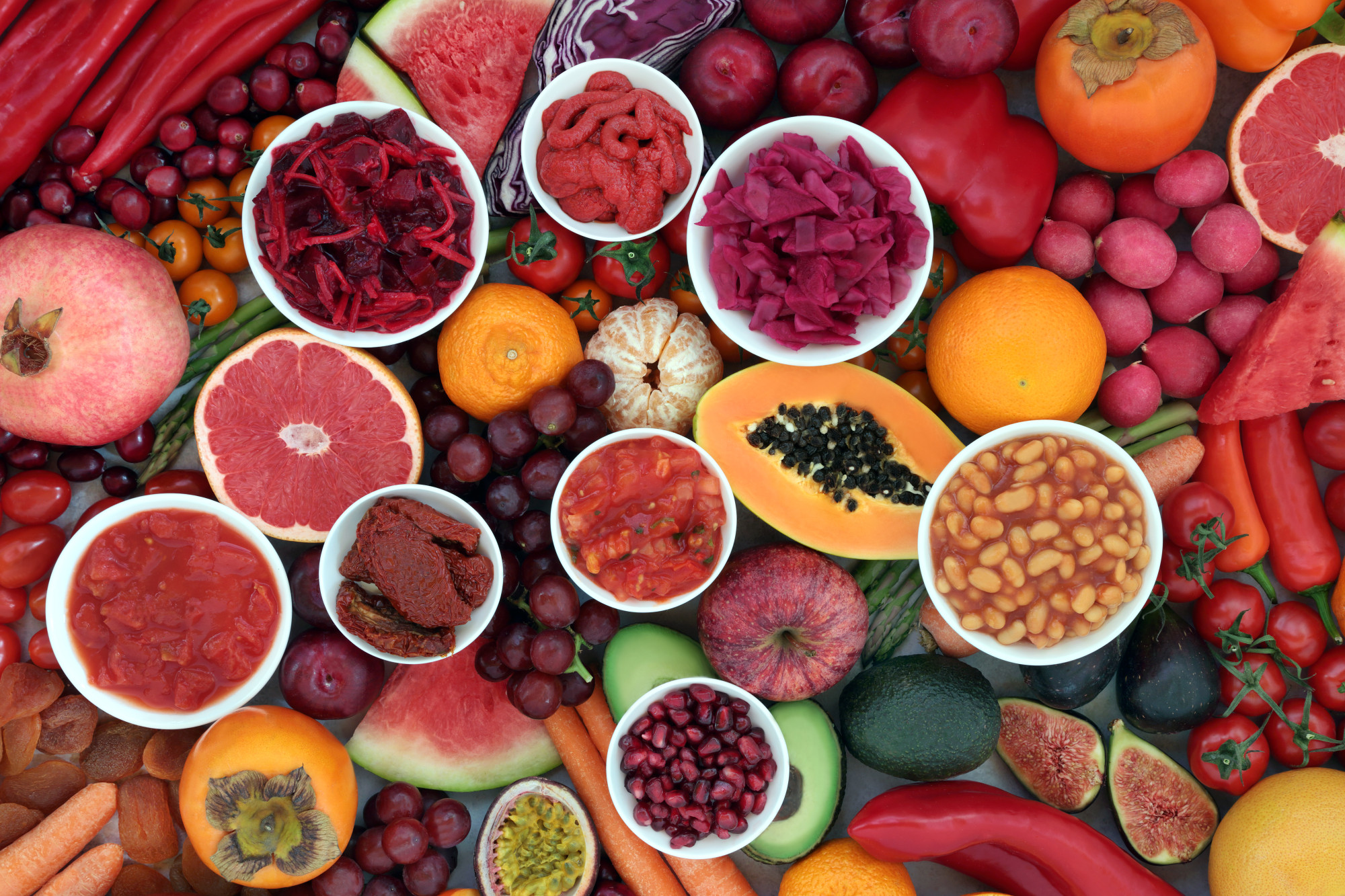Phytonutrients, also known as phytochemicals, are chemical compounds found in all plant foods that are essential for optimal human health. So far about 10,000 known phytochemicals have been identified and they are responsible for many of the colours, tastes and aromas of foods we eat every day.
These phytonutrients add a powerful kick of antioxidants into the diet and help the body to function normally as well as protect against various diseases. They enable the body’s cells to communicate and function, preventing cellular mutations or abnormal cell development. Ultimately this is thought to prevent the growth of cancer cells.
So let’s take a look at some phytonutrient rich foods, their benefits on health and how to use them in everyday life.
Phytonutrients and superfoods
Foods containing high amounts of phytonutrients are often labelled as superfoods. This term is used a lot, often in the media, to promote the super abilities of certain foods to maximise health. The most important thing to remember is that one single food, even a superfood, is not going to fix a bad diet or hold the key to better health on its own. A varied whole food diet is what matters the most. The term functional food can be used in place of superfood and generally means the same thing however, it is not as much of a hype term. A food that contains essential nutrients and provides positive benefits to health beyond its nutritional value can be considered a functional food.Types of phytonutrients
There are thousands of different types of phytonutrients, each with varying physical characteristics and functions. Phytonutrients can generally be broken down into three major classes – terpenoids, polyphenols and thiols. Terpenoids (also known as terpenes) are the largest and most diverse class of plant phytonutrients. Some terpenoids in herbs and spices have medicinal and antimicrobial properties, are used in food preservation, as well as being responsible for the flavour of some foods, for example, saffron, lemongrass and ginger. Polyphenols are a major class of phytonutrients that can be broken down into several sub-classes of flavonoids, phenolic acids and non-flavonoid polyphenols. Flavonoids are commonly found in blueberries, black tea, broccoli, kale and citrus fruits. Phenolic acids are found in whole grains, coffee, wine, turmeric and many herbs. Non-flavonoid polyphenols can be found in grapes, wine, dark chocolate, peanuts, pistachios, flaxseed, sesame seeds and turmeric. Thiols have been extensively studied and found to have numerous protective properties, and are divided into two groups. Glucosinolates found in cruciferous vegetables are protective against cancer as they can inhibit the growth of several types of cancer cells. Allyl sulphur is the major compound found in garlic, with potent anticancer, antimicrobial and antiviral properties.Health benefits of phytonutrients
As we’ve touched on already, phytonutrients have numerous health benefits and have been found to play a vital role in disease prevention. However, the key to achieving optimal health is to eat these foods as part of a balanced diet. Phytonutrients can provide a boost to your health, and are:- anti-inflammatory
- anti-diabetic
- antioxidant
- antimicrobial
- anticancer/anticarcinogenic
- neuroprotective
- cardioprotective
- antiviral, and
- antiatherosclerosis.
Popular phytonutrient-rich superfoods
There are a number of phytonutrient-rich superfoods that most people have heard of. These foods are generally easy to find in supermarkets and green grocers, and can be added to a healthy diet in lots of different ways.- Kale is a leafy green vegetable from the Brassica family of vegetables, including broccoli, cauliflower, bok choy and cabbages. Kale is known for its high antioxidant content, anti-inflammatory nutrients and potential anti-cancer properties in the form of glucosinolates (which are also found in high amounts in broccoli and broccoli sprouts). Kale contains numerous phytonutrients, particularly kaempferol and quercetin. Kale is also high in vitamins (especially vitamins A, C, E and K) , glucosinolates (anti-cancer properties), and chlorophyll.
- Blueberries are a fruit native to North America and grown worldwide, with consumption rapidly increasing due to their numerous health benefits. They may be small but are phytonutrient-rich, making them a potent anti-inflammatory and antioxidant, beneficial in protecting against chronic diseases.
- Chia seeds are tiny seeds of a flowering plant from the mint family, native to Mexico and Guatemala. When soaked, chia seeds absorb up to 12 times their weight in liquid. This creates a gel-like layer making them excellent for assisting bowel regulation, easing constipation and removing toxins from the gastrointestinal tract.
Food you might be surprised to know is actually a superfood
Now let’s look a few superfoods that you may not realise are rich in phytonutrients.- Algae have been consumed by people for thousands of years and offer many health benefits. Algae can be divided into macroalgae and microalgae, which refer to the number of cells they have in their makeup. Microalgae are made up of a single cell and include chlorella and spirulina. Macroalgae are made up of more than one cell and form a plant, such as seaweeds which vary in colour and are red, brown or green. Seaweed lives near the seabed and is one of the most nutritionally dense plants on earth and the most abundant source of minerals in the plant kingdom as it has access to all the nutrients in the ocean. Seaweeds have a high chlorophyll component, a powerful detoxifier and chelator of metals and toxins.
- Honey is a well-known source of nutritional goodness, and its use can be traced back more than 8000 years. Since ancient times, honey has been used for medicinal purposes due to its activity in the body, including defence against viruses and bacteria and assisting wound healing and healing sore throats. The composition of honey is quite complex, and even though it is made up primarily of sugar (fructose and glucose) and water, it also contains roughly 200 different substances, including vitamins, minerals, amino acids, enzymes, flavonoids, phenolic acids.
- Cacao is the unprocessed form of the cacao bean. You may know the term cocoa, however cocoa does not retain any of the valuable phytonutrients. Up to 90% of cacao’s antioxidant content is lost when treated and processed at high temperatures to turn it into cocoa powder. Raw cacao is high in micronutrients and polyphenols, such as magnesium, tryptophan, iron, flavonoids (particularly the flavan-3-ols that improve cognition and memory and reduce stroke risk). Cacao powder and nibs (crushed and dried cacao beans) can be used in baking, smoothies, desserts, and beverages as a delicious way to get some valuable nutrients and boost antioxidant intake!



